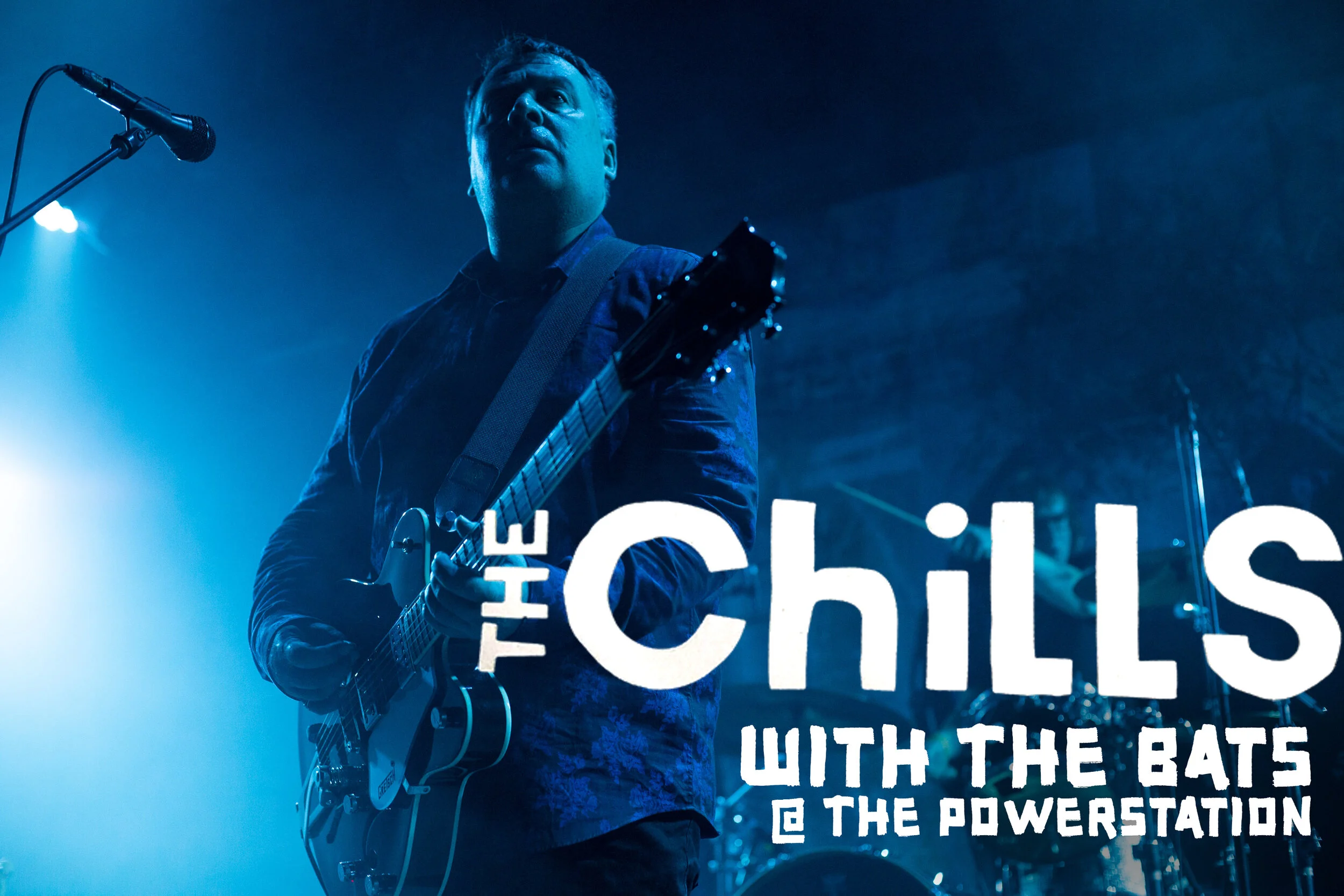The Plague
I’ll be the first to admit that I hadn’t heard of The Plague before Thursday night. I know a history of punk in Aotearoa that is dappled at best, largely learned from archive releases periodically dished out by prominent alternative music labels. But The Plague was a band I’d never encountered, and after last night I’m kicking myself for living 26 years in ignorance. It’s not an exaggeration to say that this was one of the most surprising, most ecstatically funny, and most eye-opening punk gigs I’ve seen in Tāmaki Makaurau. So after dancing my shooketh ass off, I did a little digging to find out what this bizarre band was all about.
The Plague’s conception in the late 1970s was a collision of poetry, theatrics, and musical drama. Richard Von Sturmer, founder and lead lyricist/vocalist, initiated the foetal stage of The Plague as a group primarily focused on poetry and performance. With little experience in musical composition but deep ties to the Auckland and London punk scenes, Von Sturmer teamed up with former Westlake Boys school mate and burgeoning punk prodigy Tim Mahon to transform The Plague’s theatrical vision into a form of musical madness, unlike anything Aotearoa had ever seen.
Their legacy is indisputable. The Plague gave rise to a fresh vision of punk in Aotearoa: one that grasped onto the rapid social and political changes sweeping the country and twisted them with camp theatrics, satirical impressions, and masterful critique to promote sexual liberation, anti-capitalism, and an absurd cultural revolution to counter the sterility of Aotearoa’s early neoliberal transition. And some forty years down the track, The Plague’s tunes are as relatable and relevant as ever.
With just a 7 song set, The Plague didn’t waste a moment. Opening with 7 Day Plan, Von Sturmer was immediately in character, kicking and bouncing around the stage with an infections energy that he would sustain throughout the performance. Private Property, a riotously funny critique on the paranoia of conservative suburbia, showcased the ostentatious, avant-garde style that set them apart from other punk acts of their youth. Kiwi Keith playfully taunted the downfall of burly Kiwi masculinity, and moved into their cult classic Glandular Fever. And oh boy, have I got the fever. With a Rocky Horror-style sensuality laid over an up-tempo danceable punk banger, the song was irresistible. As hilarious as it was raunchy, with surrealism to rival Dalí, I found myself struck with a regret that I haven’t heard this band before.
Andrew Snoid takes the lead vocal for Voodoo TV, leaving Von Sturmer to sit to the side in a buttoned-up trench coat and truly horrifying deadpan mask, performing as a jolting animatronic TV viewer sucked into void of banal consumer television. Mystery No Mystery, another classic from their cannon, took us into the final song of the night. Panthers of Sound, a prowling and ravenous number calling to the crowd to unleash the animal within, had me crouched at the front of the stage with my claws out. Von Sturmer was crawling around the stage, growling and gnarling at the band as they slowly descended into chaos.
With the exception of a handful of prominent Flying Nun visionaries, many of the bands instrumental in founding Aotearoa’s punk scene are at risk of being condemned to the dusty corners of musical archives, fading into obscurity as new generations of disillusioned kids take to the stages that were built nearly 50 years ago. If we let that history slip through our fingers, if we forget who created these platforms for us, we wouldn’t just lose a catalogue of tinny tape recordings from the damp bedrooms of crumbling student flats. We would lose the stories they wanted us to hear. We would lose the sound of resistance to the things we are still fighting against. We would lose an intergenerational understanding, a solidarity, a cultural foundation for us all to stand on. We’d lose our most important influences.
It’s not just about recognising the importance of bands like The Plague in shifting the cultural landscape of punk. It’s about listening. Hearing what they had to say, learning about their ways of resistance, channelling our history through the sound and continuing what was started when Von Strummer took to the NAMBASSA stage completely naked, painted in blue, prowling around and howling like a feral cat. You don’t see that shit at Whammy! these days, but maybe you should! The Plague was formed to give audiences something to think about, something they’d never seen before, something that would give Muldoon a heart attack. We have more to learn from them than we might remember. But thankfully, they’re not about to let us forget.
We don’t get to see a band like The Plague every day. They’re as unique now as they were in 1979, when they were a haphazard family of teenage artists, poets, performers, and musicians. They still have the wit, the audacity, and the confidence to dish out a hell of a show that I can’t see myself forgetting. And the only reason their influence will ever come to a halt is if our community lets their sound and vision pass us by. If you get the chance to see them perform, don’t sleep on it. Live the history of this moment. Indulge yourself in a something a little bit naughty. Get naked, cover yourself in paint, and leap on the back of the panthers of sound. Catch the fever, learn from the kids that came before us, and let The Plague corrupt you!
Words Ali Nicholls
Images Conner Crawford

















